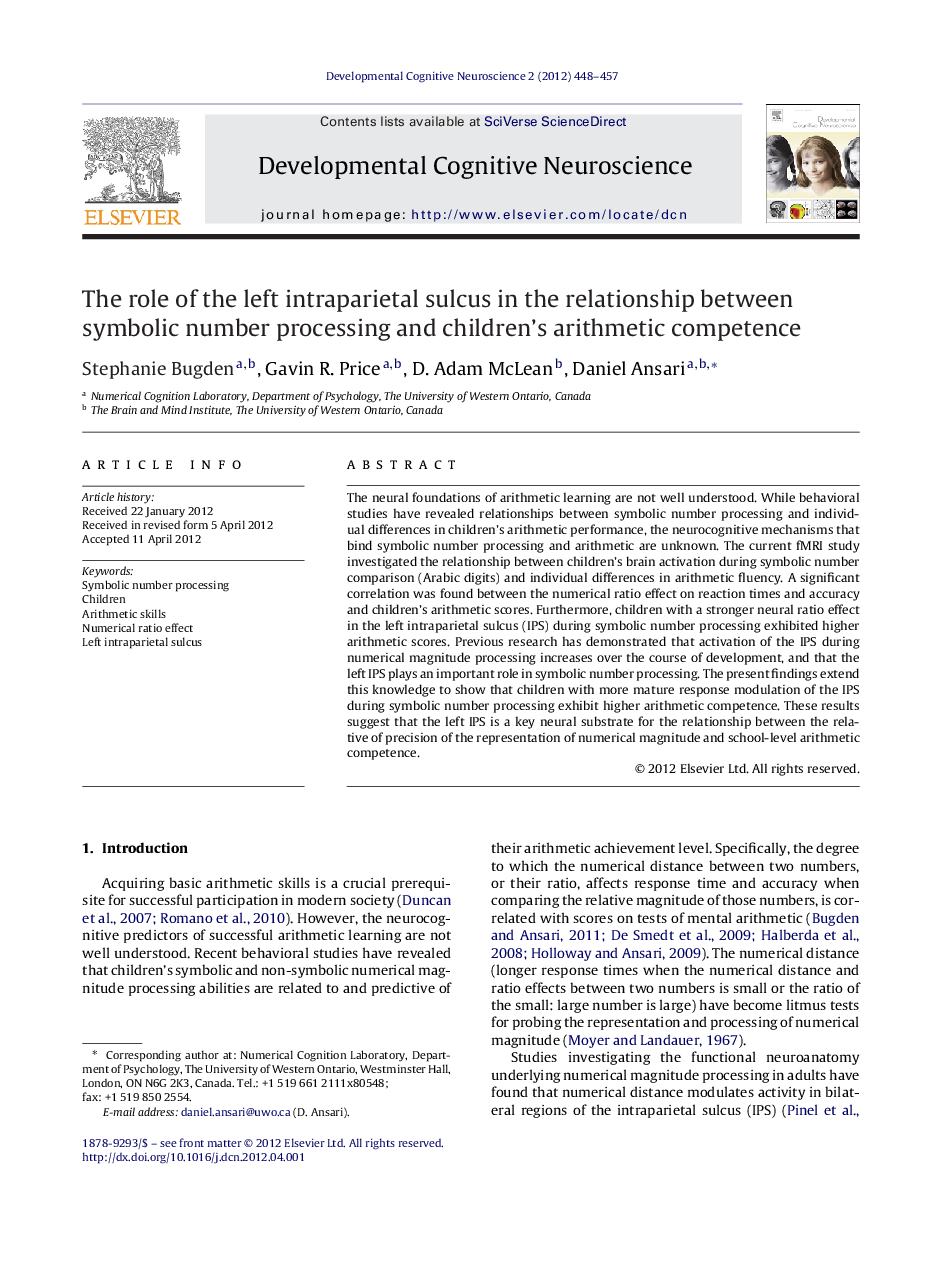| Article ID | Journal | Published Year | Pages | File Type |
|---|---|---|---|---|
| 6261010 | Developmental Cognitive Neuroscience | 2012 | 10 Pages |
ABSTRACTThe neural foundations of arithmetic learning are not well understood. While behavioral studies have revealed relationships between symbolic number processing and individual differences in children's arithmetic performance, the neurocognitive mechanisms that bind symbolic number processing and arithmetic are unknown. The current fMRI study investigated the relationship between children's brain activation during symbolic number comparison (Arabic digits) and individual differences in arithmetic fluency. A significant correlation was found between the numerical ratio effect on reaction times and accuracy and children's arithmetic scores. Furthermore, children with a stronger neural ratio effect in the left intraparietal sulcus (IPS) during symbolic number processing exhibited higher arithmetic scores. Previous research has demonstrated that activation of the IPS during numerical magnitude processing increases over the course of development, and that the left IPS plays an important role in symbolic number processing. The present findings extend this knowledge to show that children with more mature response modulation of the IPS during symbolic number processing exhibit higher arithmetic competence. These results suggest that the left IPS is a key neural substrate for the relationship between the relative of precision of the representation of numerical magnitude and school-level arithmetic competence.
⸠Participants demonstrated a significant behavioral and neural ratio effects. ⸠Behavioral ratio effect negatively correlated with math achievement. ⸠Neural ratio effect in the left IPS positively correlated with math achievement. ⸠Behavioral and IPS ratio effects unrelated to measures of reading achievement and IQ.
